7 must-see works at NGV’s French Impressionism exhibition
The doors to NGV’s hotly anticipated French Impressionism exhibition have finally swung open. And you’ll want to make a beeline for these world-famous works.
Arts
Don't miss out on the headlines from Arts. Followed categories will be added to My News.
More than 20 days after its originally scheduled opening, the NGV’s latest blockbuster exhibition has finally opened.
Monet, Renoir, Cezanne and van Gogh are just some of the master artists on show at the French Impressionism from the Museum of Fine Arts, Boston exhibition.
The Melbourne Winter Masterpieces exhibition at NGV International features 110 works, including 79 never seen before in Australia.
With dozens of head-turning masterpieces on offer, Museum of Fine Arts, Boston, European paintings curator Katie Hanson reveals the seven works visitors should make sure to see:
1. DEGAS, AT THE RACES IN THE COUNTRYSIDE
“At the Races in the Countryside, by Degas, is a small painting, but it is not to be missed,” Ms Hanson said.
“It is a fascinating combination of family portrait, episode from daily life, landscape, and equestrian scene.”
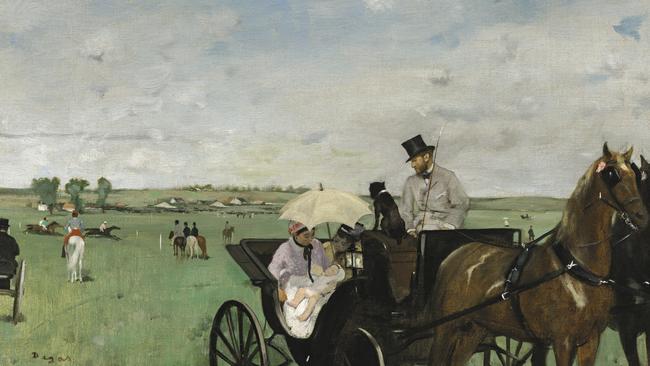
Known for his depictions of ballet dancers, this lesser known work by Degas is a landscape, a scene from everyday life and a family portrait.
2. RENOIR, DANCE AT BOUGIVAL
Dance at Bougival is arguably one of Renoir’s most popular paintings among contemporary audiences.
“We can imagine the heat of the touching hands and flushed cheeks, the sounds of music and lively conversation, the mingling smells of cigarettes, flowers, maybe also sweat, and the taste of those half-consumed beers,” Ms Hanson said
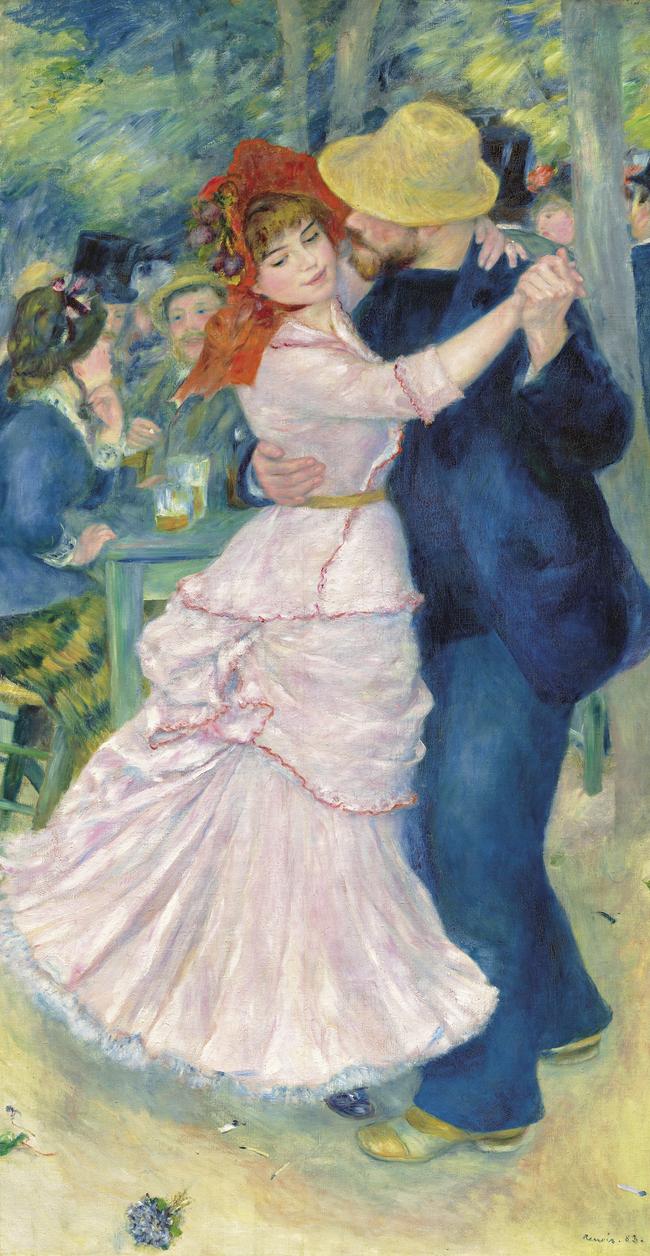
“All of this is portrayed in a brilliant array of colours and brushstrokes that meet our eyes.
“It is a feast for the senses.”
The open-air cafes of Bougival, a town on the Seine outside Paris, were popular recreation spots for city dwellers, including the Impressionist painters.
3. CAILLEBOTTE, FRUIT DISPLAYED ON A STAND
Caillebotte exhibited his Fruit Displayed on a Stand in 1882 at the Seventh Impressionist Exhibition.
It is reported when the well-to-do Caillebotte passed a shop display he liked, he would buy it and have it delivered to his studio to serve as a model.
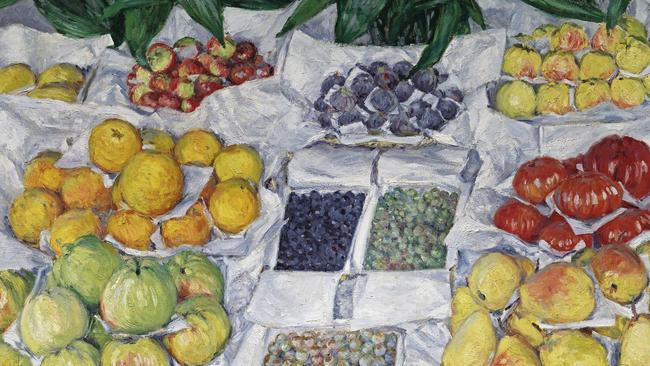
“It is an unusual, modern still-life composition with the lush fruits arrayed as at a high-end grocer with its subtle asymmetry suggesting a slightly sidelong perusal,” Ms Hanson said.
Born in Paris, Caillebotte was a significant member of the Impressionists who not only participated in, but also financed, many of their group exhibitions from 1876.
4. Cassatt, In the Opera Box (No. 3)
Cassatt included the first and the last state of this print in the Fifth Impressionist Exhibition (1880).
“So she intended for her process of vision and revision, as she worked from one state of the print to the next, to be experienced by viewers,” Ms Hanson said.
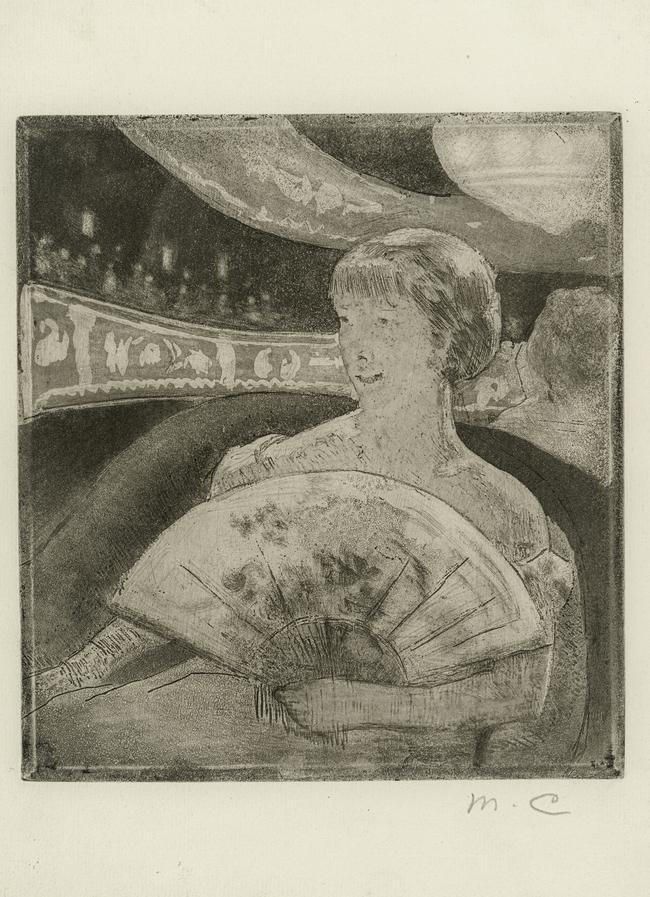
“Impressionism is so inextricably linked to luminous colour that seeing a characteristic subject treated in black-and-white provides different insight into the play of light and shadow in Impressionism.”
Cassatt was a Philadelphia-born artist who spent most of her adult life living in France.
Some of her works showed her sister Lydia seated at the Paris opera and theatre.
Cassatt was known to be a keen follower of fashion who enjoyed the spectacle of Parisian night-life.
5. SISLEY, WATERWORKS AT MARLY
“Be sure to look out for Sisley’s paintings in the exhibition, including Waterworks at Marly,” Ms Hanson said.
“It is shimmering with autumnal colours reflected in the surface of the water spreading across the composition.
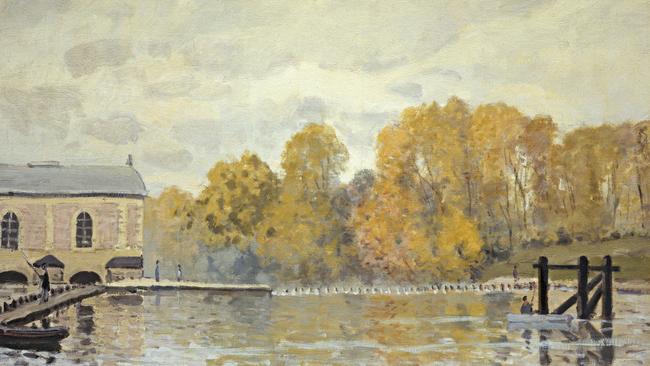
“Here and there, people fish, adding to the casual air of the composition.”
Sisley was an Impressionist dedicated to painting landscape ‘en plein air’ (outside).
6. MONET, POPPY FIELD IN A HOLLOW NEAR GIVERNY
“There are larger and more iconic Monet paintings, but there are also great treasures to be found among the more unassuming gems,” Ms Hanson said.
In the mid-1880s, Swiss artist Georges Jeanniot visited Monet in Giverny and, as they walked together, observed Monet’s habit of “stopping before the most scenes, making me aware of how splendid and unexpected nature is”.
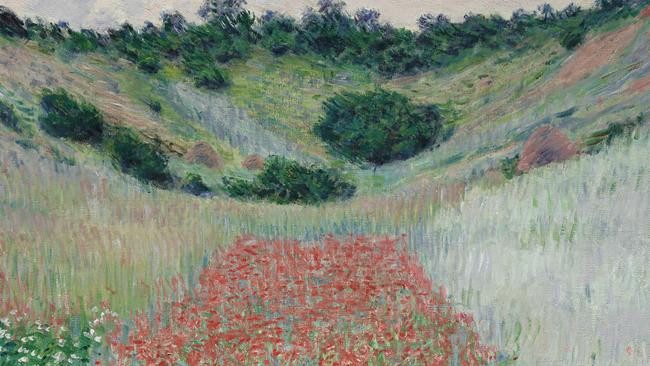
“This little hollow – with its trapezoid of vibrant poppies, its scrubby little bushes, and long, waving grasses – that cups dramatically into a convex, immersive experience of colour and texture is exactly that: splendid and unexpected,” Ms Hanson said.
7. SIGNAC, PORT AT SAINT-CAST
This is one in a series of four seascapes that Signac painted along the coast of Brittany in northwest France.
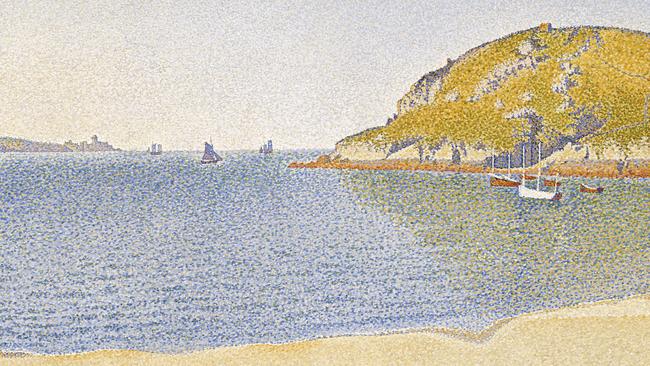
“With his rigorous application of dots of colour, Signac achieved the effect of sand’s texture, the rippling surface of water, and the subtle shift of colour as the sky reaches the horizon,” Ms Hanson said.
“It is astonishing to behold, honouring Monet’s achievement and developing it in a new direction.”
French Impressionism from the Museum of Fine Arts, Bostonis at NGV International until October 3.





